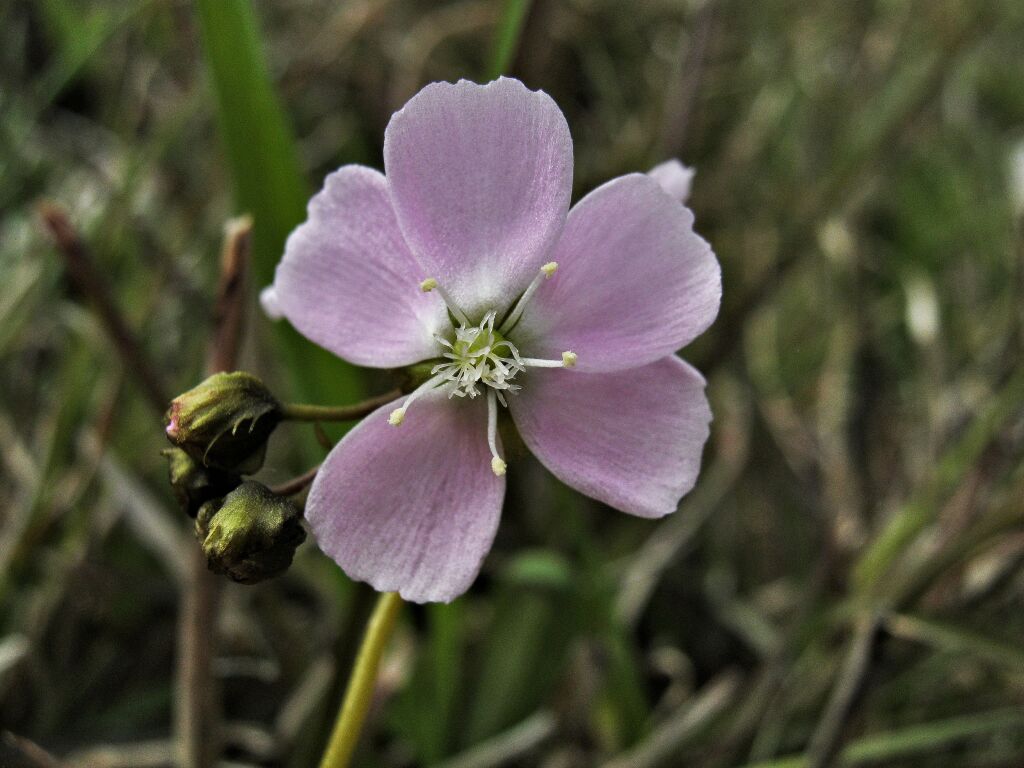Drosera auriculata
Backh. ex Planch.Tuber more or less globose. Stems erect, usually simple, sometimes shortly branched, 9–60 cm long, glabrous. Leaves in basal rosette and cauline; basal leaves appressed to the soil, often reduced, deciduous or apparently absent, not peltate, petiole 5–17 mm long, lamina orbicular to reniform with 2–6 mm diam.; cauline leaves 5–19 mm long, peltate, distally often in groups of 2–6, petiole 5–17 mm long, spreading or re-curved, glabrous, lamina suborbicular to lunate, 2–6 mm diam.; stipules absent. Inflorescence terminal or subterminal, a one-sided raceme, 2–14-flowered; bracts narrowly ovate or ovate, c. 1mm long; pedicels 1–14 mm long; sepals 5, ovate, elliptic or rarely obovate, 2–6 mm long, glabrous, margin entire to erose; petals 5, obovate, 3–10 mm long, white or, more commonly pale pink; styles 3, each 0.6–1.4 mm long, the upper half of each divided digitately several times. Seeds cylindrical, 0.8–1.6 mm long, shallowly reticulate. Flowers (Jul.–)Sep.–Nov.
LoM, MuM, Wim, GleP, VVP, VRiv, GipP, OtP, WaP, Gold, CVU, GGr, DunT, NIS, EGL, EGU, WPro, HSF, HNF, OtR, Strz, MonT, HFE, VAlp. Also SA, Qld, NSW, ACT, Tas. Occurs in dry to damp areas, often among rocks in forested areas, frequently in gravelly soils.
Formerly treated as a subspecies of Drosera peltata. It is principally distinguished from the closely related D. peltata and D. hookeri by its longer, cylindrical seeds, glabrous sepals, and generally longer style and petals.
Conn, B.J. (1996). Droseraceae. In: Walsh, N.G.; Entwisle, T.J., Flora of Victoria Vol. 3, Dicotyledons Winteraceae to Myrtaceae, pp. 356–361. Inkata Press, Melbourne.
 Spinning
Spinning



